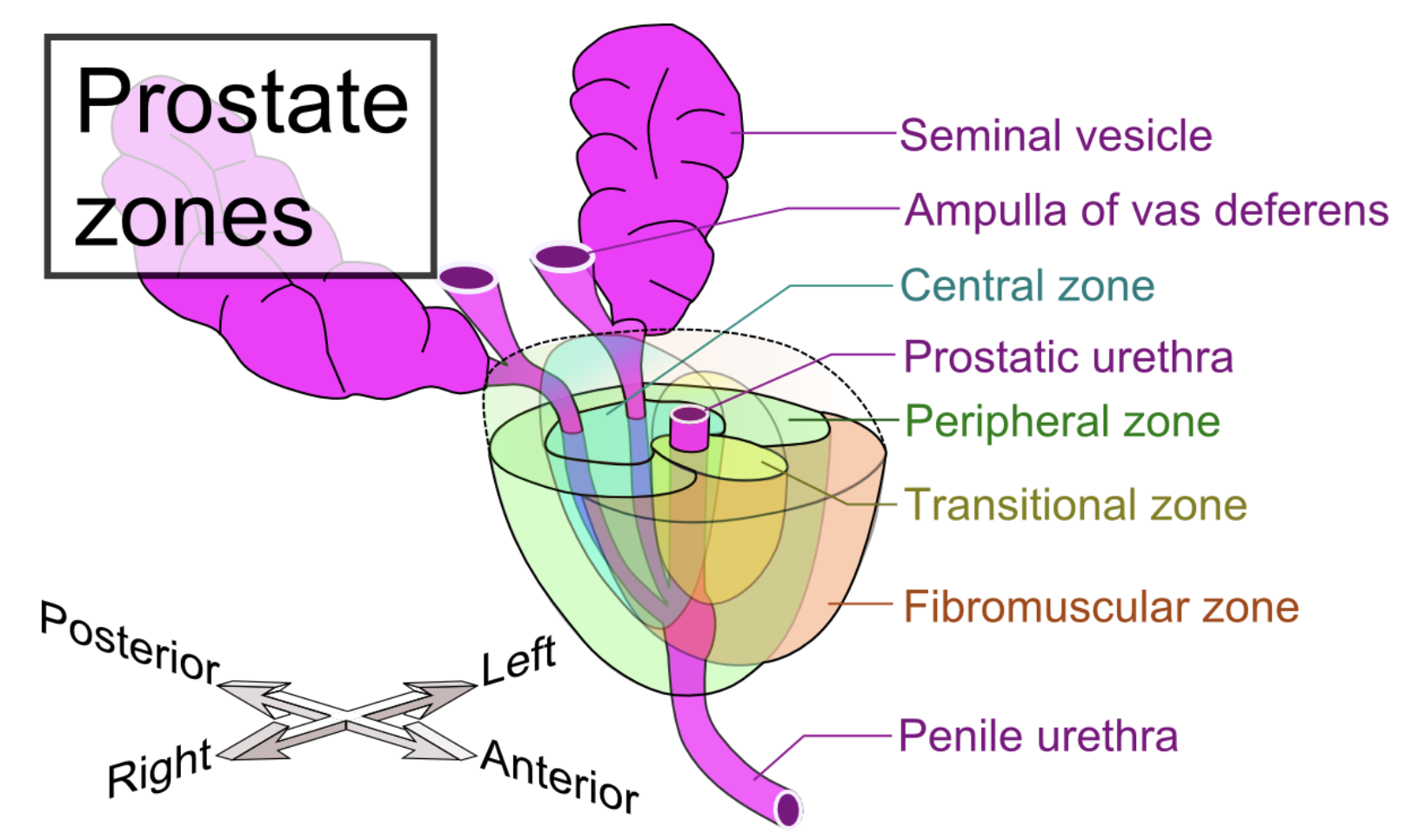
- Zonal Anatomy (Clinical Relevance)
- Peripheral Zone:
- Largest zone, located posteriorly.
- Most common site (70-80%) of prostate carcinoma.
- Palpable during a DRE.
- Cancer here typically does not cause urinary symptoms until advanced.
- Transitional Zone:
- Surrounds the prostatic urethra.
- Site of Benign Prostatic Hyperplasia (BPH).
- BPH compresses the urethra, leading to lower urinary tract symptoms (LUTS) like hesitancy, weak stream, and nocturia.
- Central Zone:
- Surrounds the ejaculatory ducts.
- Less common site for tumors.
